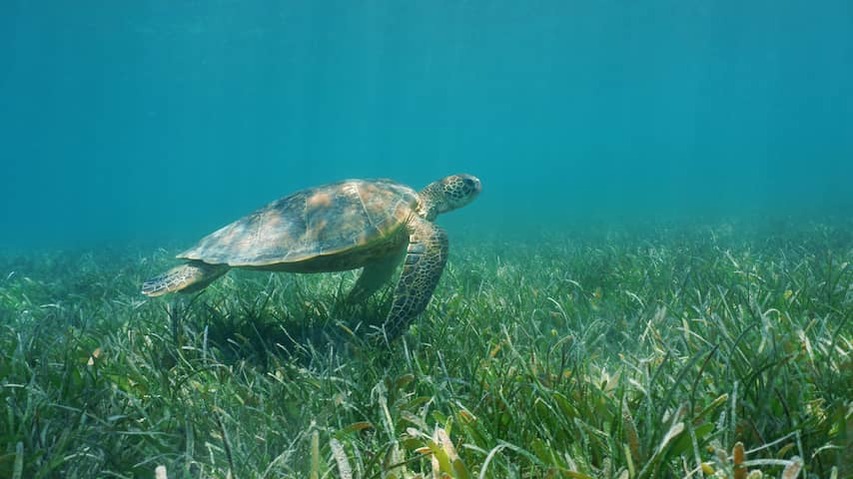
Seagrass is a small plant, but it has major positive effects on the climate. For Example, The Grass Stores Large Amounts of CO2. New Research Shows that it Grows Better in Water that Warms Up Due to Climate Change.
It is Therefore Not An “Insignificant Grass”, Says Fee Smulders in an Interview With Nu.nl. Smulders of Wageningen Marine Research (WMR) Conducts Research Into SeaGrass. Her latest Study Shows, Among Other Things, That SeaGrass Grows Better When the Water is warmer.
What makes SEAGRASS – Not to Be Confused with Seaweed – So Special is its ability to store Large Amounts of Carbon Dioxide (CO2) from the Seawater. “Seagrass covers only 0.2 percent of the sea surface, but accounts for 10 percent of the annual co2 capture,” Says the Researcher.
The Plant with Roots in the Seabed Reacts Differently to the Warming of the Water Than Other Aquatic Plants. “Most Water Systems are affected by this, But SeaGrass does slightly better when it gets warmer,” Says Smulders. However, there is a limit: in tropical areas the water should not hot up too much and seagrasses are also not resistant to heat waves.
Seagrass Provides More Biodiversity on the Seabed. The Plant is Popular with Sea Turtles, But Various Fish Species are also Attracted to It. Duration the research, scientists discovered that seagrass grows back faster when turtles eat it. Smulders: “A Little Grazing is Actually very good.”
Planting on a Large Scale is Still Difficult
If Seagrass is so good for the climate, can it be planted on a large scale on ocean floors? Unfortunately, It’s not that easy, Smulders Knows. It is Difficult to Find Good Conditions for SeaGrass to Grow.
For Example, The Aforementioned Water Temperature Plays a Role and SeaGrass also Needs Light To Grow. And an area with a lot of current is not favorable for the plants. “So It is Actually More Efficient and Cheaper to Protect the Existing SeaGrass,” She Explains. “However, research shows that seagrass can spread easy if it grows somewhere.”
That is why it is important that people touch sea trass as little as possible. The CO2 Absorbed from the Seawater Ends Up in The Ocean Floor via The Roots of the SeaGrass. Accordance to smulders, it is safe there. “Unless it is Disturbed, then the CO2 can escape back into the outside world.”
For the climate, it is Therefore Important That SeaGrass is Left Alone. “They are not short green sprigs. People are therefore not very impressed by them on vacation.” Approximately 3 to 7 percent of Seagrass Disappears every year. “People ofe remove it or trample on it. But they need to know that it is very important.”
Making the Importance of SeaGrass Known is, in Her View, The Most Important First Step. On Islands Such As Bonaire, This can Easily Be Achieved by Placing Signs, She Believes.
SeaGrass in the Netherlands
SeaGrass also grows to a limited extent in the Netherlands, such as in Zeeland. AltheHOUG ACCORDING TO HERE USED TO BE MANY MORE PLANTS. “Back then it was just used from a commercial point of view. Mattresses were filled with it and dikes were reinforced with it.”
Due to the so-called SeaGrass Disease and the Arrival of the Afsluitdijk, The SeaGrass Has Largely Disappeared. But in recent years more time and Attention has leg paid to it again. Fortunately, Smulders Thinks. In Addition to the Aforementioned Benefits, She Knows One More to Mention: “It also Improves the Water Quality.”